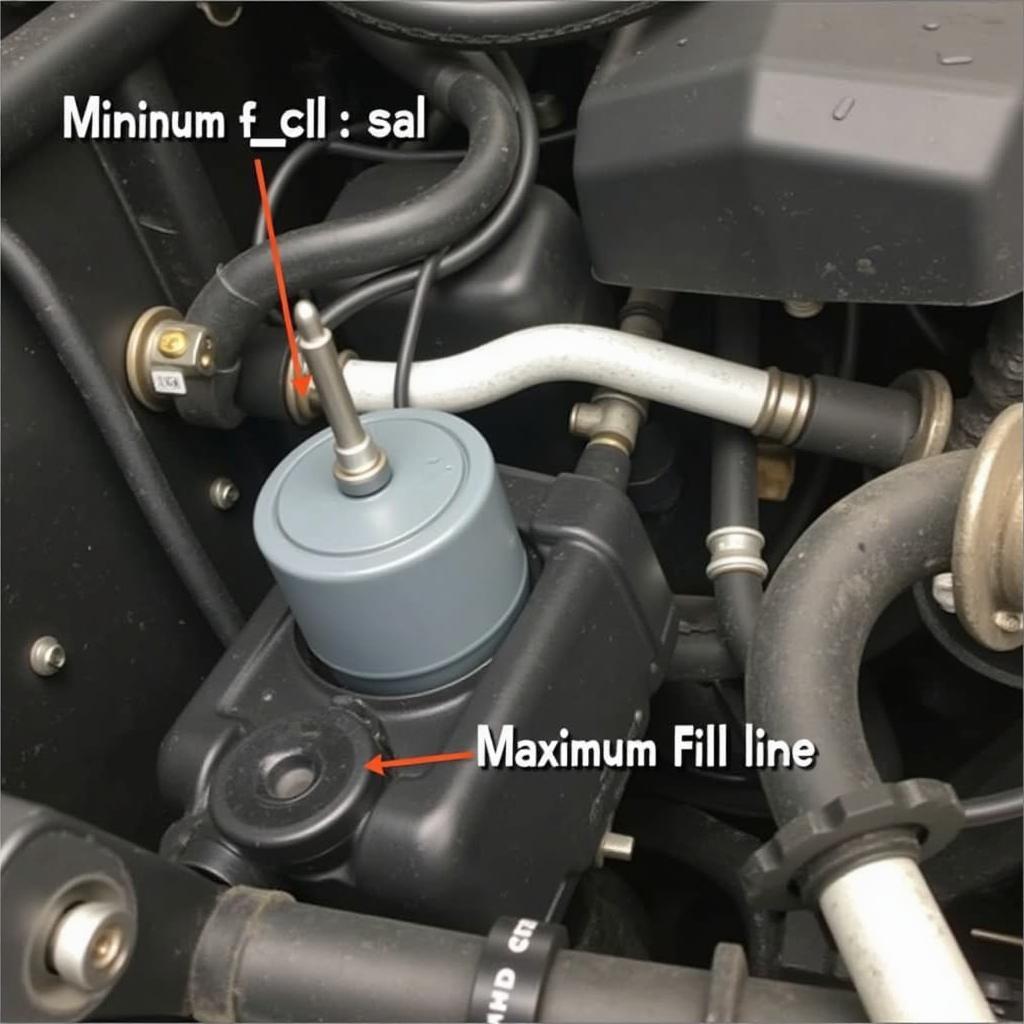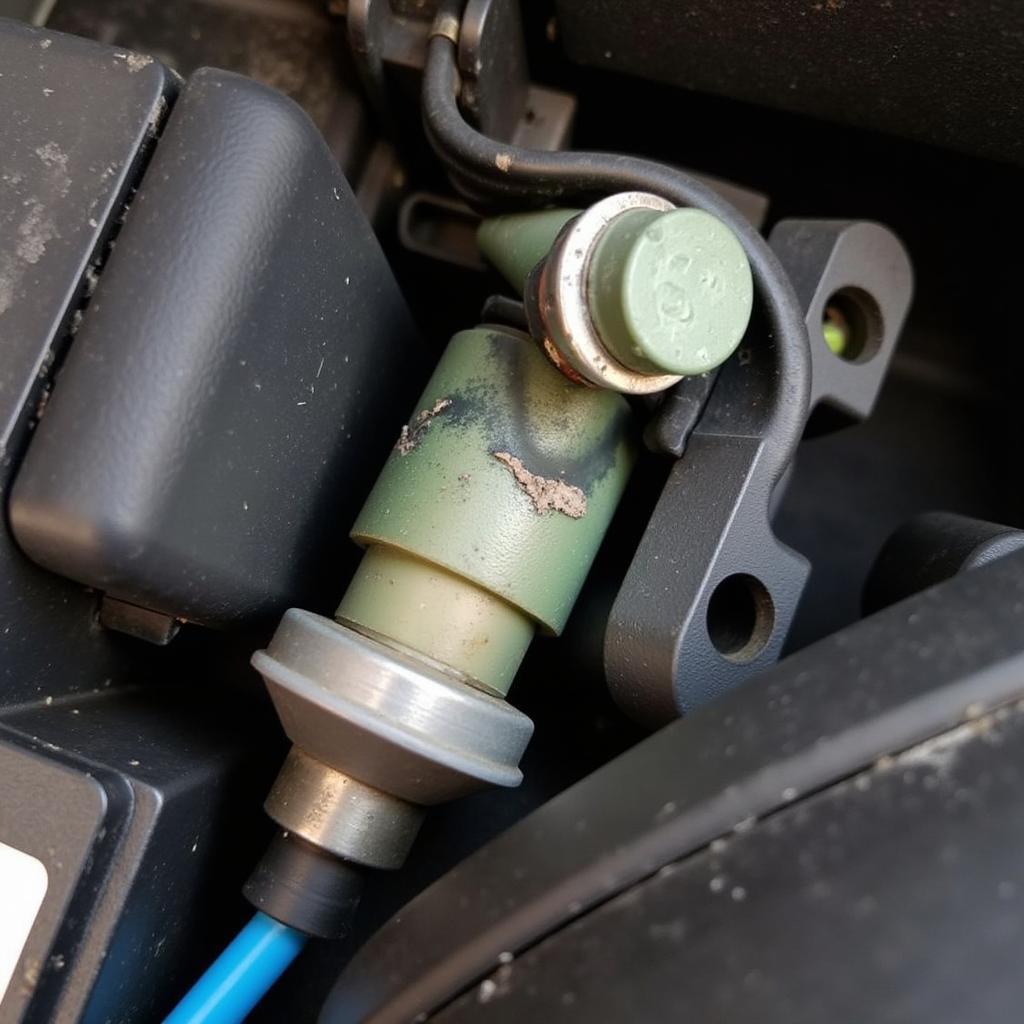The brake warning light on your Mazda CX-5 is a crucial safety feature that alerts you to potential problems within your braking system. While it can be alarming to see it illuminate on your dashboard, understanding its various meanings and knowing how to address them can save you from costly repairs and dangerous driving situations.
This comprehensive guide will walk you through the common causes of a brake warning light in a Mazda CX-5, how to diagnose the issue, and the potential solutions you or a qualified mechanic can implement.
Decoding Your Mazda CX-5 Brake Warning Light
The brake warning light in your Mazda CX-5 can illuminate in different ways, each signaling a specific problem:
- Solid Red Light: This usually indicates one of two things. Either your parking brake is engaged, or there’s a serious issue with your braking system, such as low brake fluid.
- Flashing Red Light: A flashing brake warning light often points to a more critical problem with the ABS (Anti-lock Braking System) or electronic stability control. This could be due to a faulty sensor or a malfunctioning ABS module.
Common Causes of a Brake Warning Light in a Mazda CX-5
Several factors can trigger the brake warning light in your Mazda CX-5. Here are some of the most common culprits:
- Low Brake Fluid: One of the most frequent reasons for the brake warning light is low brake fluid, often caused by worn brake pads or a leak in the braking system.
- Worn Brake Pads: Brake pads have wear indicators that trigger the warning light when they become too thin, signaling the need for replacement.
- Faulty Brake Light Switch: The brake light switch, responsible for activating your brake lights when you press the pedal, can malfunction and trigger the warning light.
- ABS Sensor Issues: A malfunctioning ABS wheel speed sensor can disrupt the ABS system and activate the warning light.
- Problem with the Master Cylinder: The master cylinder is the heart of your braking system, and any issues with it can lead to brake failure and trigger the warning light.
- Electrical Problems: Loose wiring or a short circuit within the braking system can also cause the brake warning light to illuminate.
Diagnosing the Issue: What to Do When Your Brake Warning Light Comes On
If your Mazda CX-5’s brake warning light illuminates, it’s crucial to take immediate action to ensure your safety and prevent further damage. Here are some steps to help you diagnose the issue:
-
Check Your Parking Brake: The first step is to ensure your parking brake is fully disengaged. It’s easy to overlook this simple possibility.
-
Inspect Brake Fluid Level: Park your car on a level surface and locate the brake fluid reservoir under the hood. Check the fluid level, which should be between the “Min” and “Max” lines.
-
Visually Inspect Your Brakes: If possible, safely jack up your car and inspect your brake pads and rotors for excessive wear or damage. Look for leaks around the calipers, brake lines, and hoses.
-
Consult a Professional: If you cannot identify the cause of the problem or are uncomfortable performing these checks yourself, it’s best to consult a qualified mechanic specializing in Mazda vehicles.
Remote Diagnostics and Programming: A Modern Solution for Modern Cars
In today’s digitally-driven world, remote diagnostics and programming offer a convenient and efficient way to diagnose and even resolve certain car issues, including some brake-related problems. This involves connecting your Mazda CX-5 to a specialized software program via the OBD-II port, allowing technicians to remotely:
- Read and interpret fault codes: This provides specific insights into the potential causes of the brake warning light.
- Analyze sensor data: Remote access to sensor data, such as wheel speed sensor readings, can help diagnose ABS-related issues.
- Perform software updates: In some cases, outdated software within your car’s braking system can cause malfunctions. Remote programming allows technicians to install the latest software updates wirelessly.
mazda cx 5 forward brake warning adverse condition warning
While remote diagnostics and programming offer numerous benefits, it’s essential to remember that not all brake warning light issues can be resolved remotely. Physical repairs or component replacements may still be necessary, depending on the diagnosis.
Potential Solutions for a Brake Warning Light in a Mazda CX-5
Once you’ve identified the root cause of the brake warning light, you can explore the appropriate solutions:
- Adding Brake Fluid: If low brake fluid is the culprit, topping it off with the correct DOT specification is crucial. However, it’s vital to address the underlying cause of the low fluid, such as a leak or worn brake pads.
- Brake Pad Replacement: Worn brake pads require immediate replacement to ensure optimal braking performance and safety. It’s advisable to replace both sets of pads on the same axle simultaneously, even if only one side is worn.
- Brake System Repairs: Depending on the diagnosis, repairing leaks, replacing faulty calipers, or addressing issues with the master cylinder might be necessary.
- Sensor Replacement or Calibration: If a faulty ABS sensor is detected, replacing or recalibrating it might be the solution.
- Software Updates or Module Replacement: In cases of software glitches or a malfunctioning ABS module, updating the software or replacing the module might be necessary.
2018 mazda cx-5 brake assist warning
Don’t Ignore the Warning Signs
Ignoring a brake warning light in your Mazda CX-5 can lead to dangerous driving conditions and potentially expensive repairs. Regular maintenance, timely inspections, and addressing any warning signs promptly will go a long way in keeping your braking system in optimal condition and ensuring your safety on the road.
Remember, “A stitch in time saves nine” – addressing a minor brake issue early on can prevent it from escalating into a major problem later.
FAQs: Frequently Asked Questions about Mazda CX-5 Brake Warning Lights
1. Can I drive my Mazda CX-5 with the brake warning light on?
It’s strongly advised against driving with the brake warning light illuminated. Doing so puts you and others at risk. It’s best to safely park your car and contact a qualified mechanic immediately.
2. How much does it cost to fix a brake warning light issue in a Mazda CX-5?
The cost of repair varies greatly depending on the underlying cause. Simple fixes, like adding brake fluid, are relatively inexpensive. However, more complex repairs, such as replacing the ABS module, can be significantly more costly.
3. Can a faulty brake light bulb trigger the brake warning light?
While a faulty brake light bulb won’t directly trigger the brake warning light, it’s a separate issue that should be addressed promptly for your safety and to avoid traffic violations.
4. How often should I have my Mazda CX-5’s brakes inspected?
It’s generally recommended to have your brakes inspected annually or every 12,000 miles, whichever comes first. However, if you notice any unusual noises or changes in brake pedal feel, it’s best to have them inspected sooner.
5. Can I replace my Mazda CX-5’s brake pads myself?
While replacing brake pads is possible to do yourself if you have mechanical experience, it’s generally recommended to have a qualified mechanic perform the work to ensure proper installation and bleeding of the braking system.


